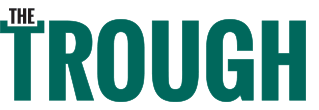
Data from the USDA’s most recent cattle report found there to be a sharp decline in the number of dairy heifers available to replace older cows exiting the U.S. dairy herd, which could have challenging implications for domestic milk production in the future.
The number of dairy replacement heifers has fallen by almost 15% over the last six years, according to the report.
According to a new report from CoBank’s Knowledge Exchange, this could be due to the rising cost of rearing dairy heifer calves.
“Raising dairy heifers has been a losing proposition for most farmers in recent years, to the tune of $600 – $900 per animal,” said Corey Geiger, lead dairy economist for CoBank, in a release. “To better manage on-farm heifer inventories, dairy farmers have turned to using beef semen on a portion of their dairy herd to reduce the number of replacement heifers. That’s enabled farmers to cut the costs associated with raising heifers and generate additional income from beef sales.”
While heifer rearing cost estimates vary, they are all trending upward. University of Wisconsin Extension survey data from 1999 to 2015 found the total cost to raise a dairy heifer from birth to entering the milking herd climbed from $1,360 to $2,510 per head. In a similar analysis looking at 2016 to 2021, Penn State Extension specialists calculated heifer rearing costs averaged $2,034.
Heifer values have not kept pace with higher rearing costs. From April 2018 to January 2022, the sale price of dairy heifers never exceeded $1,400 per head, according to USDA’s Agricultural Prices report. The discrepancy between rearing costs and sale value led to a prolonged and steady decline in replacement heifers in recent years.
Watch a video synopsis and read the report, Dwindling Dairy Heifer Numbers May Inhibit New Milk Production.
Print this page